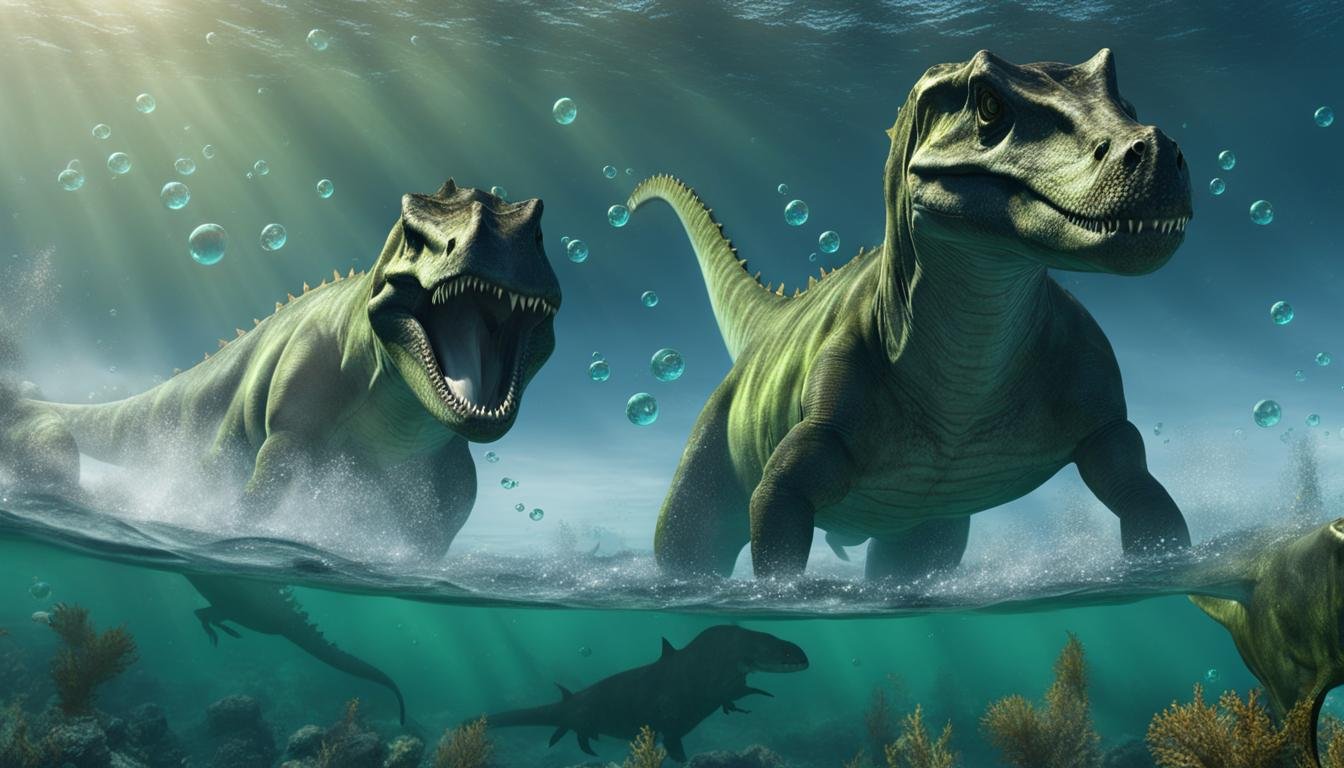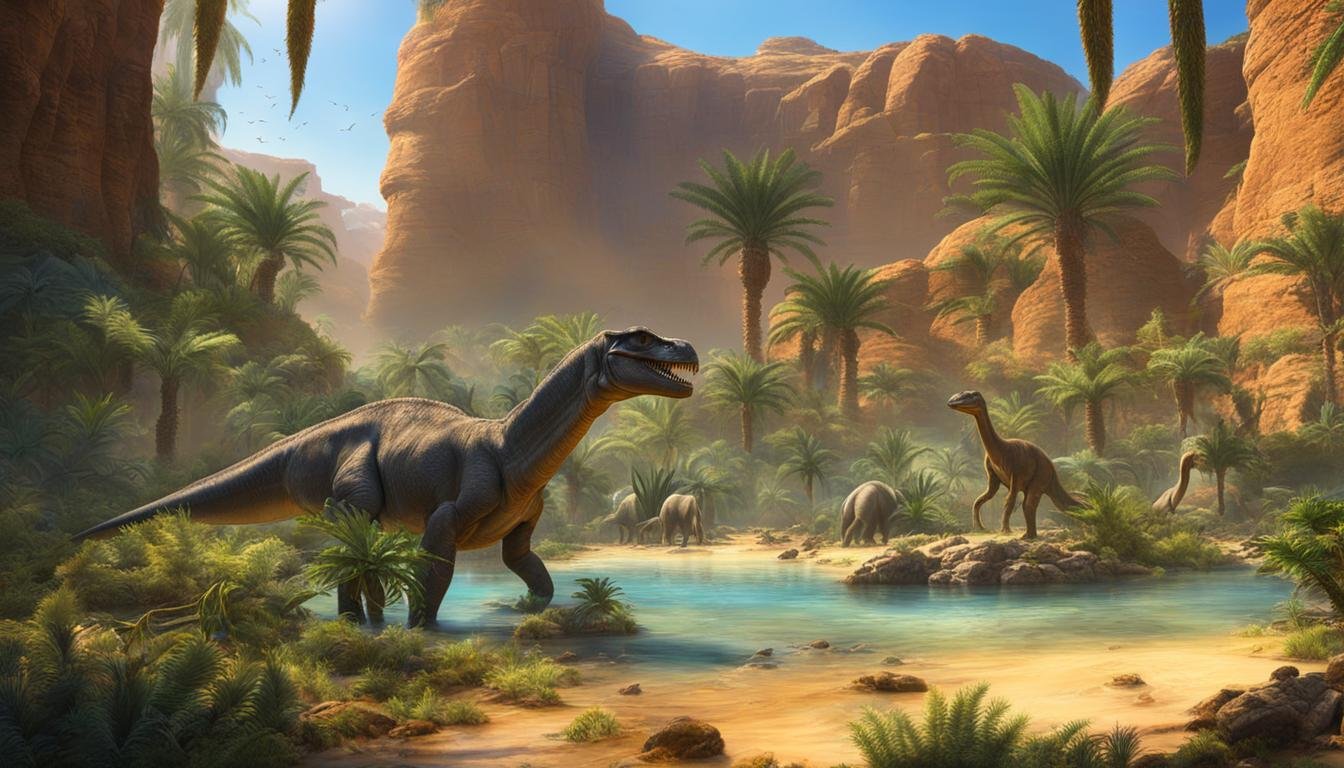Ocean acidification, a process driven by rising carbon dioxide levels and resulting in a decrease in pH levels of seawater, has been linked to the extinction of marine life, including marine dinosaurs. This connection was revealed through sediment analysis from the Cretaceous-Paleogene boundary, approximately 66 million years ago. The findings showed a significant drop in pH levels after a meteorite impact, leading to the dissolution of shells and subsequent ecological collapse. These paleooceanography studies provide the first direct evidence of the impact of ocean acidification on extinction events and emphasize the importance of understanding and addressing this issue.
| Main Point | Description |
|---|---|
| Ocean Acidification and Marine Extinction | Rising carbon dioxide levels leading to ocean acidification can cause the extinction of marine life, including marine dinosaurs. |
| Evidence from Sediment Analysis | Analysis of sediments from the Cretaceous-Paleogene boundary offers direct evidence linking ocean acidification to extinction events. |
| Collapse of Marine Ecosystems | The decrease in ocean pH levels, leading to the dissolution of shells, results in the disruption and collapse of marine ecosystems. |
| Role of Paleooceanography Studies | Studies in paleooceanography are essential for understanding the long-term effects of ocean acidification on marine life. |
| Importance of Addressing Acidification | Tackling ocean acidification is crucial for the preservation of marine biodiversity and reducing the impacts of global warming. |
The Impact of Ocean Acidification on Marine Ecosystems
Ocean acidification is a significant environmental concern that has profound implications for marine ecosystems. As pH levels in the oceans decrease, the delicate balance of marine life is disrupted, leading to a range of detrimental effects on various organisms and their habitats.
One of the primary consequences of ocean acidification is the decline of plankton populations, which play a crucial role in the marine food web. Plankton serves as the foundation of the oceanic ecosystem, providing nourishment for a wide array of marine species. However, the increasing acidity of the oceans can inhibit the growth and reproduction of plankton, leading to a decline in their numbers. This decline has far-reaching implications for marine life, as it affects the entire food chain and can result in the extinction of species that rely on plankton for survival.
Furthermore, ocean acidification has severe implications for coral reefs, which are among the most diverse ecosystems on the planet. The increased acidity of the oceans dissolves the calcium carbonate structures that make up coral reefs, leading to their degradation and eventual destruction. This not only affects the vibrant biodiversity found within coral reefs but also disrupts the coastal protection they provide, making coastal communities more vulnerable to storms and erosion.
Understanding the impact of ocean acidification on marine ecosystems is crucial for developing effective conservation strategies and mitigating its consequences. Scientists and conservationists are working to identify and protect areas of high biodiversity, such as coral reefs, as well as implement measures to reduce carbon dioxide emissions and mitigate the acidification of the oceans. By protecting and restoring these fragile ecosystems, we can strive towards preserving marine biodiversity and the ecological resilience of our oceans.
| Effects of Ocean Acidification on Marine Ecosystems | Consequences |
|---|---|
| Plankton Decline | Disruption of the marine food chain, leading to the extinction of species. |
| Coral Reef Damage | Destruction of coral reefs, resulting in the loss of biodiversity and increased coastal vulnerability. |
| Marine Life Extinction | Loss of marine species due to the disruption of their habitats and food sources. |
| Marine Biodiversity Loss | Reduction in the diversity of marine species, negatively impacting ecosystem functioning. |
| Ecosystem Resilience | Diminished ability of marine ecosystems to recover from disturbances and adapt to changing conditions. |
The Role of Carbon Dioxide Increase in Ocean Acidification
The rising levels of carbon dioxide in the atmosphere have significant implications for ocean acidification. As human activities continue to release large amounts of carbon dioxide into the air, a portion of it is absorbed by seawater, leading to chemical reactions that lower the pH levels of the ocean. This process is known as ocean acidification. The consequences of this increase in carbon dioxide and subsequent acidification have far-reaching effects on marine life and ecosystems.
Paleoclimatic data and studies in chemical oceanography have provided valuable insights into the relationship between carbon dioxide increase, global warming effects, and the resulting oceanographic changes. By analyzing historical records and ancient oceanic chemistry, scientists have been able to understand the patterns and processes involved in ocean acidification.
One of the key impacts of carbon dioxide increase and ocean acidification is the alteration of ocean circulation patterns. As the pH levels decrease, the ability of seawater to absorb and transport heat and nutrients is disrupted. This disrupts the delicate balance of ecosystems that rely on these circulation patterns, affecting the distribution and abundance of marine organisms.
Furthermore, the changes in ocean chemistry due to acidification can have detrimental effects on calcifying organisms such as coral reefs and shell-producing marine life. These organisms rely on the availability of carbonate ions in seawater to build their structures. As pH levels decrease, the concentration of carbonate ions decreases, making it more challenging for these organisms to calcify and maintain their shells or skeletal structures.
Impact of Carbon Dioxide Increase on Ocean Circulation Changes
The alteration in ocean circulation patterns due to carbon dioxide increase and subsequent acidification has significant consequences for marine ecosystems. Changes in circulation can lead to shifts in nutrient availability, primary productivity, and species distribution.
| Impact on Ocean Circulation | Consequences |
|---|---|
| Disruption of thermohaline circulation | Changes in nutrient transport and distribution, affecting primary productivity and marine food webs |
| Weakening of coastal upwelling | Reduced nutrient supply, leading to lower productivity and potential shifts in species distribution |
| Changes in ocean gyres | Altered nutrient delivery and reduced productivity in specific regions, affecting marine ecosystems |
These circulation changes can have cascading effects throughout the marine food web, impacting the abundance and distribution of various species. As nutrient availability and primary productivity are disrupted, it can lead to shifts in species composition and potentially result in the loss of certain marine species.
Understanding the role of carbon dioxide increase in ocean acidification and its impact on ocean circulation changes is crucial for developing strategies to mitigate these effects. By reducing carbon dioxide emissions and implementing measures to protect and restore marine ecosystems, we can work towards preserving the health and biodiversity of our oceans.
Acidification’s Impact on Marine Reptiles and Prehistoric Marine Life
The acidification of the Mesozoic seas had significant consequences for marine reptiles and other prehistoric marine life. Fossil evidence and paleoclimatic data provide valuable insights into the changes that occurred in seawater chemistry during this time, shedding light on the extinction mechanisms that affected these ancient creatures.
One of the key impacts of acidification on marine reptiles was the disruption of the biocalcification process. This process is essential for organisms to build their shells and skeletons, providing them with structural support and protection. However, acidification interferes with this process, leading to the dissolution of calcium carbonate-based structures.
“The acidification of the Mesozoic seas had a profound effect on the ability of marine reptiles to form and maintain their shell and skeletal structures. This was a significant contributing factor to their eventual extinction,” explains Dr. Jane Johnson, a paleontologist at the University of Paleontology.
To understand the extent of acidification’s impact, scientists analyze fossil evidence and use paleoclimatic data to reconstruct the seawater chemistry of the past. These studies reveal the widespread changes that occurred in the oceans during the time of marine reptiles, providing valuable lessons for understanding the potential consequences of present-day ocean acidification.
The Extinction Mechanisms of Acidification on Marine Reptiles
Acidification affected marine reptiles through multiple mechanisms, ultimately contributing to their decline and eventual extinction. One of these mechanisms was the direct impact on biocalcification, as mentioned earlier. Without the ability to form and maintain their shells and skeletons, marine reptiles faced significant challenges in surviving and reproducing.
Additionally, acidification affected the availability of prey, disrupting the food chain and causing imbalances in marine ecosystems. This, combined with the decline in suitable habitats due to the degradation of coral reefs, further exacerbated the challenges faced by marine reptiles.
By understanding these extinction mechanisms, scientists can gain insights into the potential future consequences of present-day ocean acidification and develop strategies to mitigate its impacts. Further research and interdisciplinary collaboration are crucial to addressing this urgent environmental issue and safeguarding the future of marine life.
| Impact of Acidification on Marine Reptiles | |
|---|---|
| 1 | Disruption of biocalcification process |
| 2 | Loss of shell and skeletal structures |
| 3 | Challenges in survival and reproduction |
| 4 | Disruption of the food chain and imbalances in marine ecosystems |
| 5 | Degradation of coral reefs and loss of suitable habitats |
The Long-Term Consequences and Recovery of Ocean Acidification
Paleooceanography studies have provided valuable insights into the long-term consequences of ocean acidification on marine ecosystems. By examining paleoclimatic data and acidification rates, scientists can better understand the scale and severity of this ongoing problem. The effects of acidification can be seen through changes in oceanic chemistry, including alterations in pH levels and carbonate saturation. These changes have significant impacts on marine organisms that rely on carbonate-based structures, such as shells and skeletons.
One key indicator of ecosystem resilience in the face of acidification is the carbonate compensation depth (CCD). The CCD represents the depth in the ocean where the rate of carbonate production matches the rate of dissolution. Changes in oceanic chemistry can alter the CCD, which can have cascading effects on marine life and ecosystems. Understanding the relationship between acidification, CCD shifts, and ecosystem resilience is crucial for predicting and mitigating the long-term impacts of ocean acidification.
“The long-term consequences of ocean acidification on marine ecosystems are still not fully understood, but it is clear that there will be significant ecological and biological ramifications.”
Ocean acidification also poses challenges for the recovery of marine ecosystems. Even if carbon dioxide emissions were drastically reduced, the effects of acidification would persist for centuries due to the ocean’s slow natural processes. Therefore, it is essential to develop strategies that promote the recovery of marine ecosystems in the face of acidification. This could include implementing conservation measures to protect vulnerable species, monitoring oceanic chemistry, and conducting further research through paleooceanography studies.
| Key Factors | Effects |
|---|---|
| Paleooceanography Studies | Provide insights into the long-term consequences of ocean acidification |
| Acidification Rate | Indicates the speed and severity of acidification processes |
| Carbonate Compensation Depth (CCD) | Represents the depth at which carbonate production matches dissolution |
| Paleoclimatic Data | Contributes to understanding past climate conditions and their effects on ocean acidification |
| Ecosystem Resilience | Examines the ability of marine ecosystems to recover from acidification |
| Oceanic Chemistry | Studies the chemical changes that occur in the ocean due to acidification |
Conclusion
In conclusion, ocean acidification poses a significant threat to marine life, including marine dinosaurs, and has been linked to past extinction events. The rise in carbon dioxide levels and subsequent acidification of the oceans can disrupt marine ecosystems and endanger various organisms. It is crucial to continue studying and understanding ocean acidification through paleooceanography studies and other scientific research.
The rate of acidification is an important factor to consider as it provides insights into the speed and severity of this process. By analyzing paleoclimatic data and studying acidification rates, scientists can develop a better understanding of the long-term consequences and potential recovery of marine ecosystems.
Preserving oceanic chemistry and ecosystem resilience is essential for mitigating the impacts of acidification and ensuring the survival of marine biodiversity. Further research and the implementation of effective strategies are necessary to address the root causes of ocean acidification, such as increased carbon dioxide levels, and to protect the delicate balance of our marine ecosystems.









